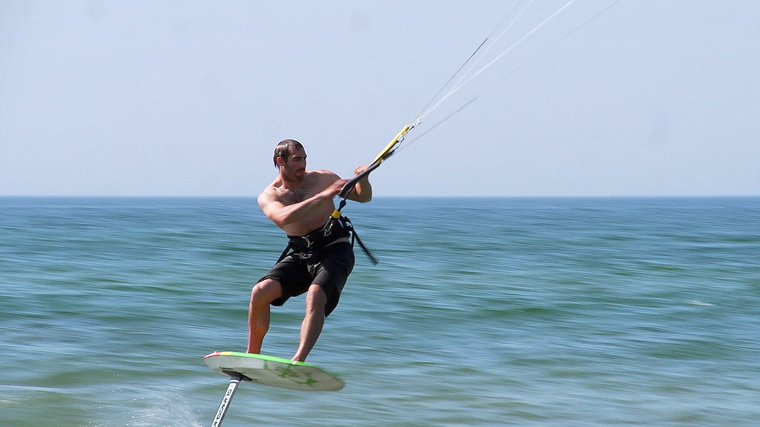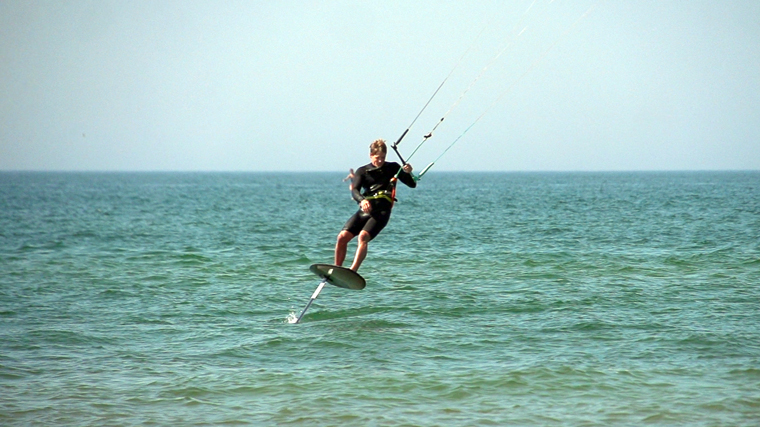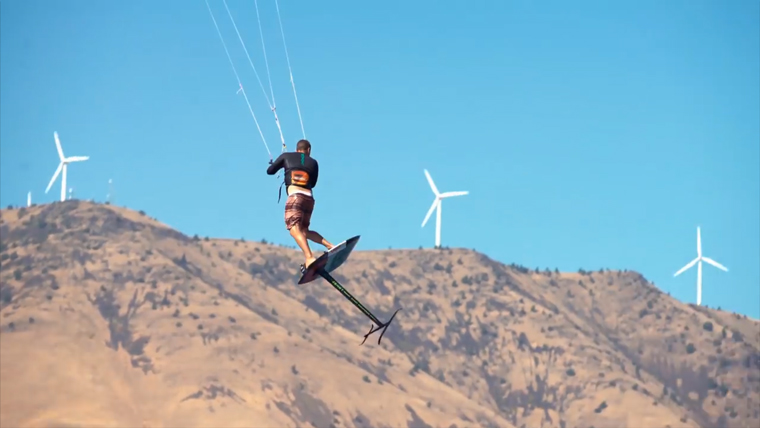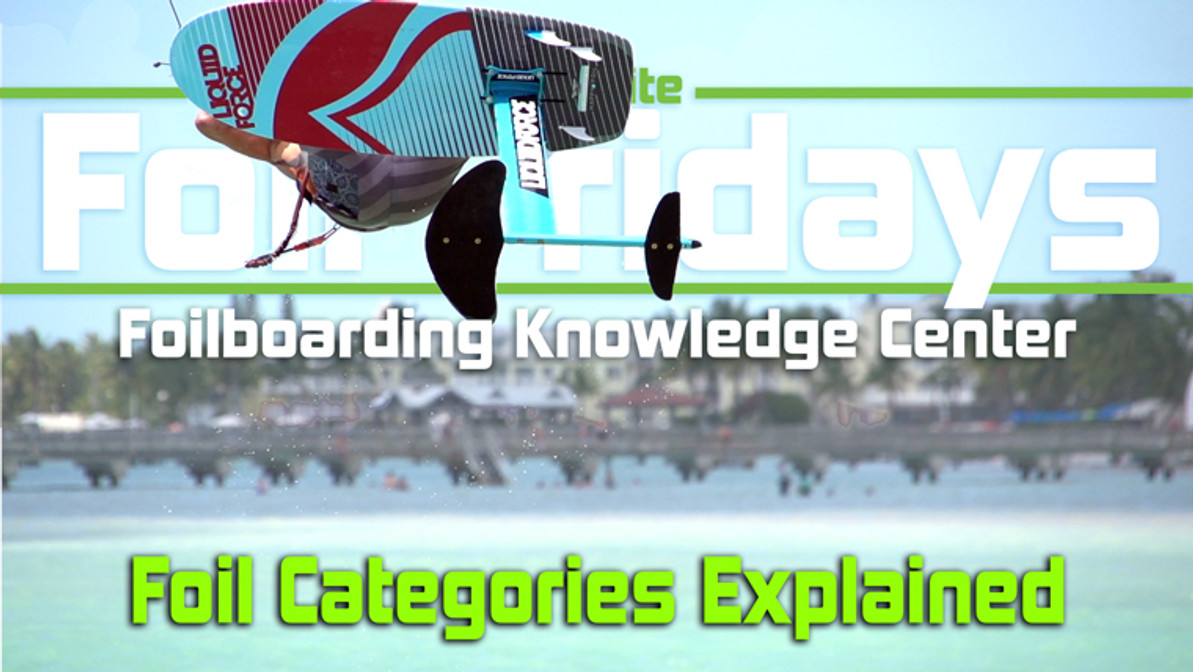General Hydrofoil Categories Explained
If you hop onto our website and look at the listings of available foils, you might be pretty quickly overwhelmed. Just like the rest of us, you're probably wondering which foil combo would be great for your personal needs. Foilboarding is exploding; and with it, a lot of gear has been developed. We've got so much to offer with so many different uses, we thought it would be helpful to break all that down all our foils into three separate categories.
- Freeriding
- Powered freeriding (yes, we explain this better)
- High performance
In kiteboarding, those three categories make up the majority of our foil offering. There'll be a little bit of grey area and some crossover between categories, but one of the coolest things about foiling is that most can encompass multiple needs. They can be used in all sorts of scenarios, and this video series we're starting will help break down which is the best foil for you. Pay attention, you just might learn something!
While we're building our knowledge center, if you would like a deeper breakdown of hyrdrofoils see tuckers blog from Foil Fridays Episode One.

Freeride
Let's start with freeride. What freeride foils involve are low speed, very efficient, very easy to ride, super-comfy foils that often cross over into the surf/wake foil area, any of that sort of market. They plane out really quickly; you can ride them with a little less kite than what you would on a few other foils. You tend to be able to glide easier; they're easier to ride all around, and it's the newest generation of foil. What we're seeing coming out this year and what is becoming a lot more popular than a lot of other options out there are these freeride foils. They're a little bit larger and they tend to be better for the beginner.

Powered Freeride
The second foil category is the powered freeride. This is a tough category to name but the reason why we've come up with "powered freeride" is that you need a little bit more kite to be riding them. They're a little higher aspect than the freeride foils so they generate a little less lift. They're slightly less efficient, but where they gain a little bit is their higher speed, they're a little more maneuverable, and for the more advanced rider or the more capable foiler they can be a little more fun to ride or a little more aggressive. Now, you can't lean back and relax like you can on some of the freeride foils, but they can still be quite stable, and they're definitely more stable than some of the early foil options, the higher aspect race-style foils.
There are a lot of foils that make up this powered freeride category. They encompass almost everything that's been available for foil in kiteboarding for the last year or so. Foils like the Liquid Force Rocket, the Cabrinha Double Agent, or the Slingshot Hover Glide (the original when it came out); anything like that is going to be found in that powered freeride category.

Race / Freestyle
The final category that we've drummed up is the race freestyle, otherwise known as the high-performance category. These are the ultimate foils. They're the fastest, they're the lightest, and they're the stiffest, and the most efficient. They are usually made out of carbon. They are incredibly quick foils. They're more difficult to use but they'll reach top speeds much easier. That's for that guy looking to reach that mark first or look at doing massive jumps like some of the Slingshot guys or ride some crazy tricks like Fred Hope from Slingshot. There are a lot of different riding styles and I think these are the people we see foiling that get us really excited about foiling. This is that category where we're watching them and are just blown away by what they're capable of doing on foils.
So what's right for you?
For someone that's looking for a more laid-back, relaxed foil experience, or someone that wants to go out there in sub-10 knots on up to about 20, fulfilling that light wind category, you're looking at that freeride category. These are the foils that are starting to come out this year. These are best for most riders as progression will come quickly and they are very fun.
And then if you're looking for something that you ride a little bit more powered-up, once again, you're looking at that powered freeride category. These are still user friendly and they certainly will not hold you back if you're aim is to learn tricks or simply to go faster.
And if you want the utmost in performance, the fastest, lightest, strongest setups, that's the race, or the high-performance freestyle category. These are incredibly however, if you're new to foiling it's advised to still with the first two categories. Much like C-kites, the benefits of these foils are only reaped by the most experienced riders.
Foils have come a long way in a short time.
One of the most amazing things about this new generation of foils is that it's giving another chance to people that had a first glimpse of foiling a few years ago, and then haven't touched on it again in the last few years because they've been bitten by the foil or ridden some of the more difficult options out thereů some of those early options were tough to ride. I can think of sessions, for myself, down in the Cayman Islands where it was my first experience with the foil; it was an early lift, and I really struggled with it. I couldn't stay upwind and was bucking all around on the thing. I finally got it after several hours, if not days, but after one of my first experiences on what I would consider a powered freeride foil, the Liquid Force Rocket Fish a few years ago, it was amazingly different. So much easier to ride, a much more stable and easy-to-ride platform to be on.
Now, with this new generation of foil, what I would consider to be a freeride foil, they're even easier to ride. They allow you to plane out or get up on foil much quicker. It's a much better option. So for those of you who've had an experience behind a boat on a more high-aspect, powered freeride-style foil that may have struggled a little bit with it and kind of gave up, this is your chance to hop back into it. These new foils are definitely going to help you out with that, and with the right setup, whether it's a selected mast length or the proper foil or the proper board for you and the proper kite setup, you can really get the hang of this much, much quicker than you could have in the past few years.
What we've discussed today is really the groundwork for what we're going to be working on in the coming months. Foiling, as you are learning very quickly, is quite complicated and we really want to spend as much time as possible dissecting every little bit of this for you, so you can expect videos to dissect each individual category that we've discussed here today, whether It's the freeride, the powered freeride, or the high-performance category. Then each individual category will be broken down with riding tips, specific video hints, product infoů the information will be endless!
So, what are the differences in these hydrofoils?
KITEBOARDING HYDROFOILS AND FOILBOARDS
- Long mast (30-40") to handle waves and chop
- Short fuselage for tight turns and quick pitch adjustment
- Full range of wing sizes to adapt for speed, conditions, and riding style. 90-280 sq in
- Track box is the most popular type of board connection
- Most boards range in size from 3'6-5'
- Most boards have the option to mount footstraps or hooks
SURFING HYDROFOILS AND FOIL SURFBOARDS
- Shorter masts (20-30") to allow for small wave riding without hitting the bottom.
- Short fuselage for tight turns and quick pitch adjustment
- Wing sizes range from large to very large. 150-230 sq in
- Both track boxes and tuttle style boxes are common.
- Most boards range in size from 4'5"-7'6"
- Added volume aids in early paddle entry on smaller boards
- No footstrap mounting options for most
SUP HYDROFOILS AND SUP FOILBOARDS
- Shorter masts (20-30") to allow for small wave riding without hitting the bottom.
- Short fuselage for tight turns and quick pitch adjustment
- Wing sizes range from large to very large. 150-280 sq in
- Both track boxes and tuttle style boxes are common
- Most boards range in size from 6'-10'
- Added volume aids in early paddle entry on smaller boards and additional stability when paddling
- Footstrap mounting options are available on some custom boards
WAKEFOILS AND WAKEFOIL BOARDS
- Short masts (15"-30") to handle chop and steep wakes
- Short fuselage for tight turns and quick pitch adjustment
- Full range of wing sizes to adapt for speed, rope-less riding, wake size, and riding style. 90-210 sq in
- Track box is the most popular type of board connection
- Most boards range in size from 3'6-5'
- Most boards have the option to mount footstraps or hooks
WINDSURF FOILS AND WINDSURF FOILBOARDS
- Long mast (30-40") to handle waves and chop
- Long fuselage for stability and pitch stability
- Full range of wing sizes to adapt for speed, conditions, and riding style. 90-280 sq in
- Tuttle is the most popular type of board connection
- Most boards range in size from 6'-8' with some models as long as 12'
- Most boards have the option to mount footstraps or hooks

Nathan Patterson is a staple on the phones here at MACkite. He joined the team in 2012 and with him came a wealth of kiteboarding knowledge and experience. Since then, Nathan has been helping customers on the phone day in and day out. Most recently, he has led the charge here in electric bike and electric skateboard knowledge. If you have questions, Nathan probably has the answers and if he doesn't, you can bet he'll find them.
Get to know Nathan: Shop Bio
Recent Posts
-
North Navigator Pro Quick Release | How to Swap Yours Out With Ease
What You Need Before starting the replacement process, ensure you have all the necessary t …18th Apr 2024 -
Foil Drive | Essential Tips to Supercharge Your First Session
The Foil Drive makes your foiling life easier. You'll get up easier and catch more waves, …17th Apr 2024 -
2024 Duotone Slick Wing Review | What's New in This Year's Model?
The Duotone Slick has been a favorite of many for several years. Pros love it for its speed, …15th Apr 2024




